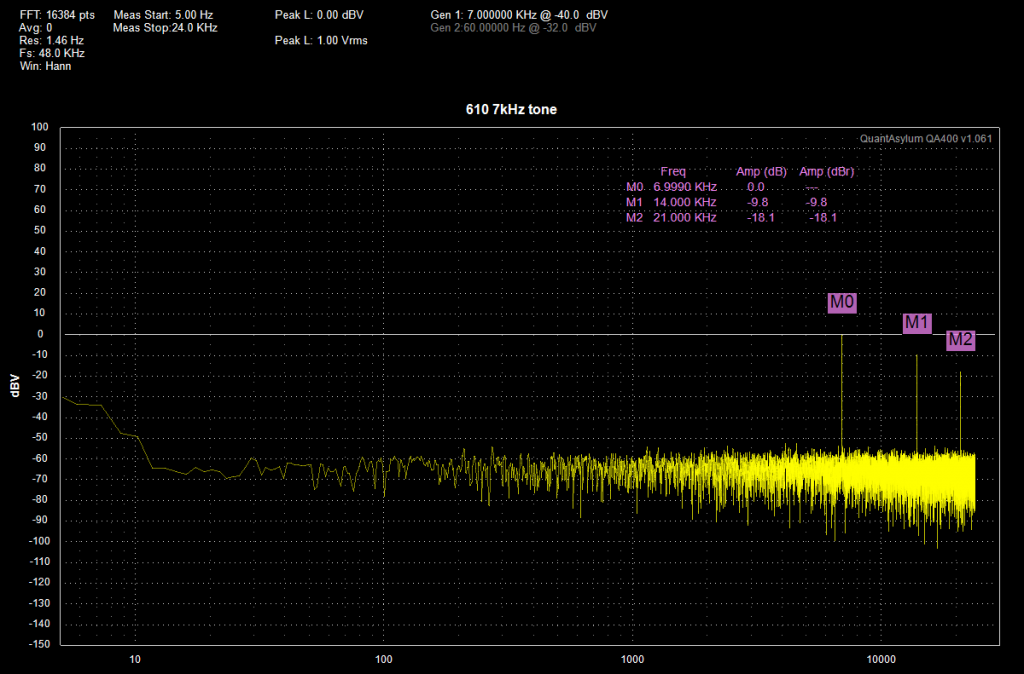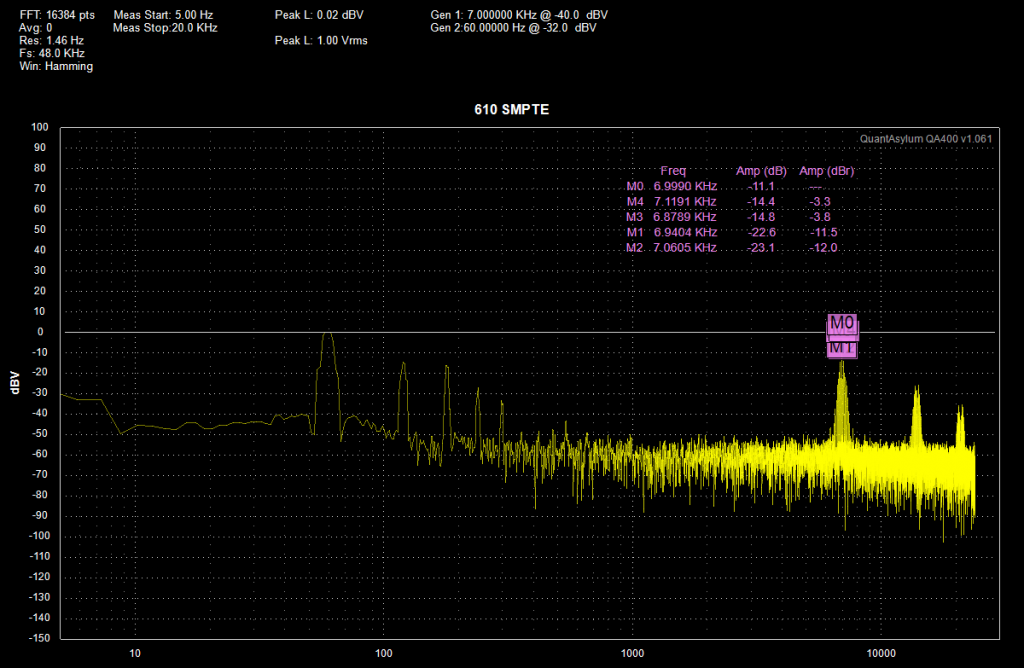have a product / project you’re interested in? or have something to say ?
Yesterday I wrote about the LA 610 ITU-R IMD test. Today I’m going to discuss the 60Hz/7kHz SMPTE IMD test for the LA 610. Like its brother test, SMPTE IMD shows a device’s performance under complex signal conditions, as well as its non-harmonic distortion performance. It gives us some idea of whether the device under test has harsh or unmusical qualities.
To perform the SMPTE IMD test, we’ll use a low frequency tone (60Hz) and a non-harmonically related high frequency tone (7kHz) with a 4:1 amplitude ratio (a difference of 12dB). I chose -32dBV and -40dBV signals for input, and set the LA 610′s preamp gain for maximum. In the chart below, you can see the 7kHz tone (-40dB input, 0dBV output) and its distortion harmonics (2nd and 3rd order) denoted by the markers at M0, M1, and M2. It’s worth noting that even though we’re testing for SMPTE IMD, the THD in this plot makes up about 34% of the signal.
If we look at the chart below, we see the modulation tones that are occurring outside of the 7kHz fundamental once the 60Hz signal is activated. The SMPTE spec is interested in ALL of the energy outside the 7 KHz tone. Technically we should add them all together. In this case, a measurement of ALL the IMD energy becomes somewhat overwhelming. Thankfully we can get fairly accurate idea of the IMD behavior if we just consider the first two pairs. Looking at markers M1-M4, we can see the amplitude of the distortion harmonics adds up to -2.9dB relative to the 7kHz fundamental. So based on these tests the LA 610′s SMPTE IMD figure is a little more than 71% at +0dBm%.

